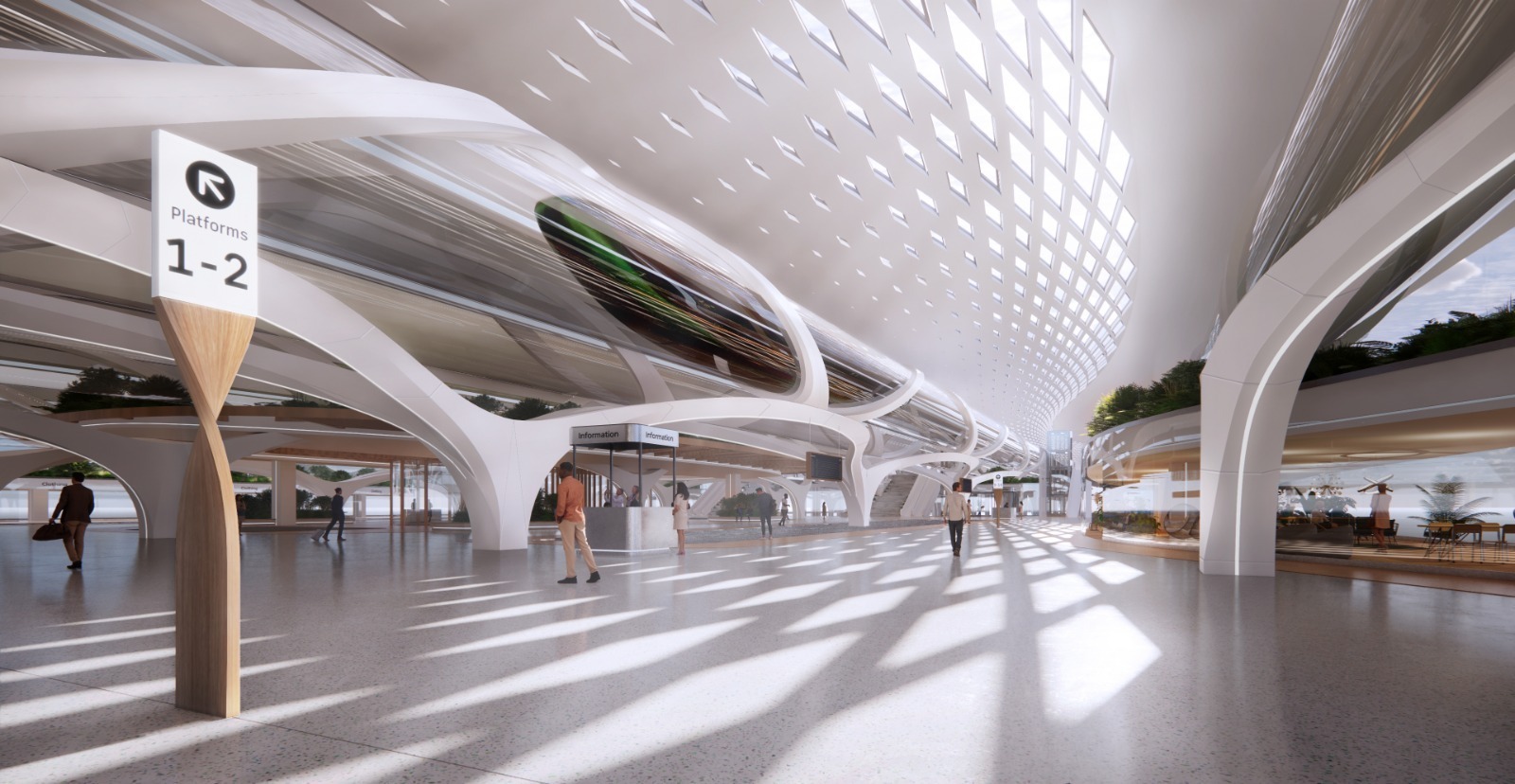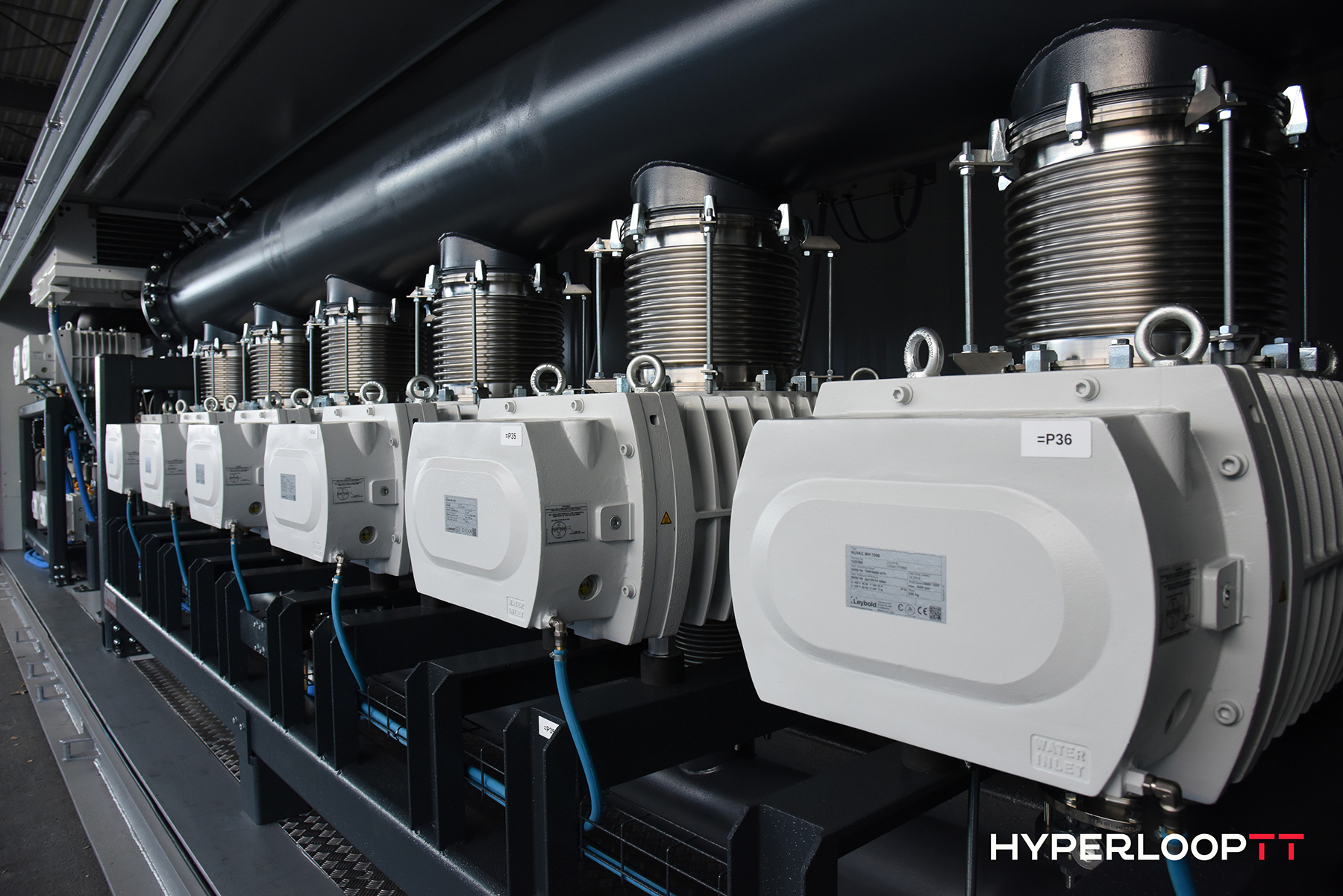By Kayt Sukel
Last year, the North Central Texas Council of Governments, which had been considering a hyperloop system to connect the stretch of 30-odd mi between Dallas and Fort Worth, announced it would, instead, go with high-speed rail. It appeared to be yet another nail in the coffin of the much-hyped mode of ground transport.
Only two years prior, Virgin Hyperloop conducted its first crewed hyperloop test outside Las Vegas — sending a specialized pod through a 500 m, low-pressure tube track at just over 100 mph. At the time, hyperloop enthusiasts called it a “moonshot moment,” a crucial step in turning the promise of this new mode of transportation into a reality. Virgin Hyperloop, and many other companies in the space, had high hopes that a commercial hyperloop system would be operational by 2030.

Yet, since that first test, hyperloop companies have hit tube-block after tube-block.
Virgin Hyperloop, the company supposedly poised to take the technology to the next level, not only rebranded as Hyperloop One but also revamped its company mission. After losing its two biggest C-suite champions and letting go of half its workforce, Hyperloop One announced it would, moving forward, focus only on hyperloop cargo applications.
Other companies in the space are also scaling back: Plans for new test tracks, certification centers, and feasibility projects across the globe have been postponed or scrapped — mainly due to lack of funding.
Brendon Wheeler, a program manager at NCTCOG, says he and his colleagues remain excited about hyperloop as a technology but don’t think it’s developed enough for prime time — which is why they ultimately decided against pursuing it.
“Our federal partners have a way to treat high-speed rail because it’s an existing and proven technology. They know how to handle safety considerations and all the hurdles you need to clear to move forward with a project that will be safe for the public,” says Wheeler.” There are no standards like that in place for hyperloop — there isn’t even a certification center or a full-scale model to help develop those standards. It makes it hard to move forward.”
Multiple obstacles
Funding, standards, and safety considerations are not the only hurdles that hyperloop companies will have to address.
Jonas Kristiansen Nøland, a hyperloop expert at the Norwegian University of Science and Technology, says that there remain significant engineering challenges that must also be overcome.
“There are so many technical problems that have to be solved simultaneously for hyperloop to work,” Nøland says. “Maintaining an air vacuum in a tube for hundreds of kilometers is quite difficult in reality — and it takes a lot of energy to depressurize the tube. These are engineering challenges that still need to be worked out.”
Nøland believes that the marketing for hyperloop has oversold what is currently possible, which has “created expectations that may not be fulfilled in the timelines that most people expect,” he says.
There is also the issue of the cost of supporting infrastructure. While Elon Musk’s Boring Co. has built out a dozen or so miles of tunnels under Las Vegas that may one day hold a hyperloop system, trying to acquire the land and rights of way to construct hundreds of miles of tubes, tunnels, and stations is not an easy — or inexpensive — proposition. Building out such infrastructure would have significant impact on the areas that house hyperloop stations and tracks.
Andrés de León, CEO of Los Angeles-based HyperloopTT, which has built a 320 m hyperloop test track in Toulouse, France, believes the ultimate profitability of hyperloop systems will make such investments more than worth it in the long run.

“We feel that the profitability of the system is a key element,” de León says. “With high energy efficiency and renewable energy generation as key objectives, the Hyperloop TT system is designed to be highly efficient — and we envision those cost savings could be used to support further progress in developing hyperloop technology and infrastructure.”
The future of hyperloop
Even as companies like Hyperloop One regroup, it’s clear that there is still great interest in hyperloop as a technology. Last year, Italy approved an €800 million ($858 million) project to build a hyperloop system connecting the cities of Venice and Padua — HyperloopTT is in the running to build it. And while U.S. Transportation Secretary Pete Buttigieg said last year that he didn’t see hyperloop being developed on the government’s dime, the Department of Transportation recently announced the Hyperloop Standards Desk Review, part of the agency’s Non-Traditional and Emerging Transportation Technology Council efforts, to guide policymakers as they consider and draft standards to support future hyperloop systems.
Nøland, for his part, believes we will have a viable hyperloop system in place. But we have to be patient.
“We have made good progress in making hyperloop a reality over the last decade, and in the coming decade, we will see a lot more activity that will help the technology mature so we can deal with all these issues,” Nøland says. “But we need to be careful about overpromising what we can deliver. We need to give it enough time so we can deal with these different challenges and finally get to the top levels of technological readiness.”



